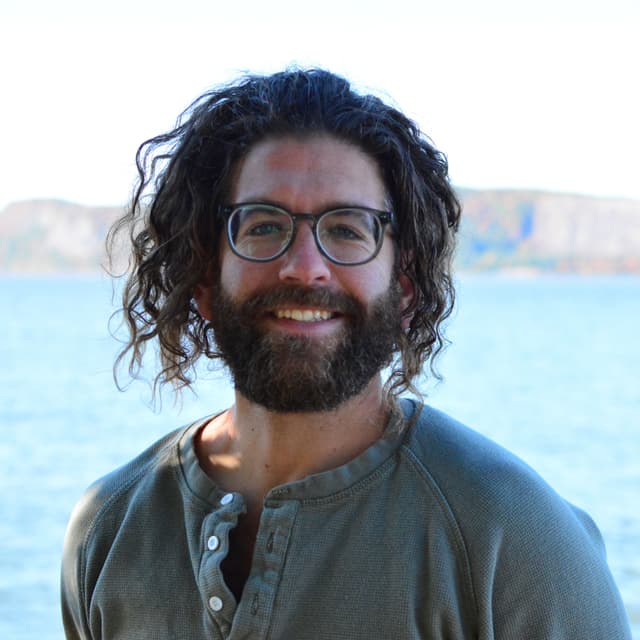Second annual ‘Source to Estuary’ summer course, created by Riverkeeper and Media Sanctuary, explores how we can restore our connections to the natural world – and each other
Our second annual “Source to Estuary” course, a collaboration between Riverkeeper and Media Sanctuary, took us back to the pristine creeks feeding Troy’s drinking water, the Tomhannock reservoir, a network of buried streams, and eventually the Hudson River waterfront. During that first
tracing of the water’s path early this summer, our group stood on a concrete bulkhead looking at the Hudson, noticing the difference across the river – how the shoreline gently sloped down to the water with trees and vegetation, creating a welcoming connection to the Hudson. The youth fellows enrolled in the course contemplated the distinction between manmade and natural; gray and green infrastructure – how those hardened bulkheads reflected the hardened lines that we have used to separate ourselves, our cities, and humans from nature. And how it doesn’t have to be that way.
As much as the shoreline denies it, the river is present in Troy, as in all of our so-called manmade spaces. It’s present in the people, nature, infrastructure, and built environment. Just as we have been taught to devalue other people, through creating systems of hierarchy and domination, so too have we been taught to see the natural world as an “other.” Now we are left with severed connections between each other and ourselves to the world.

Photo by Ellie Irons
Riverkeeper and Media Sanctuary created the summer course, and a larger effort called the
Water Justice Lab, to help restore connections to the natural world and among ourselves, by bringing into the environmental movement young people who historically have been excluded. In co-creating this program, Media Sanctuary and Riverkeeper offer paid lab work and water learning to youth in the Troy area. This year the fellows, Trae, Muzzamil, AJ, and Gracie, are processing samples from Riverkeeper’s community science program, testing levels of fecal indicator bacteria against “swimmable” clean water standards set by the U.S. Environmental Protection Agency. They analyze samples from the Upper Hudson River, which runs from Troy all the way to Newcomb, in the Adirondacks, over 150 river miles away.
Achievements like New York’s new Living Shorelines Act, passed earlier this year, only succeeded due to the efforts of those who spoke out for the river. For the environmental movement to succeed, we need to create a mass movement of people from all backgrounds and walks of life who are united around the common goal of ending all forms of hierarchy and domination of ourselves and the natural world. Our movement will continue to be defined by those who participate in it. To continue this work, we need to remake our organizations, our structures, and society itself; in place of hierarchy, equality; and in place of domination, democracy. Coming together at our local shorelines, taking notice of what’s there and how it got that way, is a start.
As indigenous historian Nick Estes writes in Our History is the Future,‘’Whereas past revolutionary struggles have strived for the emancipation of labor from capital, we are challenged not just to imagine, but to demand the emancipation of earth from capital.’’
This program is helping us to remember the linkages we have to each other and the natural world that have been broken during colonization. Our society has been built upon stolen land, enslavement, wage slavery, hierarchy and domination; we dominate each other, and in turn we dominate the world. Our salvation lies in recognizing our shared humanity and uniting around protecting each other and our world. Through taking water samples, removing old dams, restoring habitat and protecting sources of drinking water, we are reconnecting with the natural world and each other. It’s a seed of the movement – not the end, just a humble beginning.
Everything we do is built upon the faith that tomorrow can be better than today. It's a faith that requires practice, and for this program that practice brings us back to the water, to each other, to the natural world, to learn, take samples, to enjoy our time, to find connections with each other and with the parts of ourselves that have been lost.
If you know of someone who is interested in this program feel free to reach out to Sebastian at
Spillitteri [at] riverkeeper [dot] org
Earlier:





